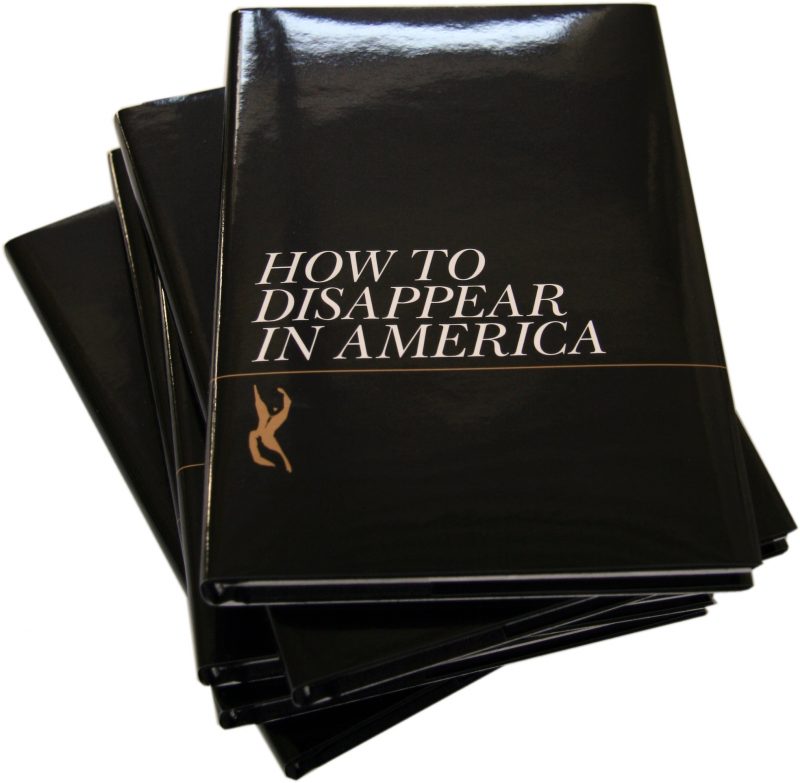In December 2009, in the midtown studio of artist and Leopard Press cofounder Wade Guyton, a group of artists, artist assistants, curators, critics, and friends gathered to listen to the artist Seth Price read from his book How to Disappear in America. Except Seth Price didn’t, in the most literal terms, “write” the book—it’s an instructional guidebook compiled largely from various websites that provide tips for living off the grid, including how to torch a car, how to clear a campsite of human traces, where to sleep in the desert, how to kill a dog that’s trailing you, why gay bars are good places to hide out, and such insights as “If you have a helicopter looking for you, bury yourself in mud and leaves and you stand a chance of not being detected by your body heat.”
Price’s intervention transformed the original material, presenting not only the paradox of disappearance as the goal in a culture that aspires for the opposite (take, for example, the distinction between Price’s title and the now-defunct HBO series How to Make It in America), but also the bizarre authorless frontiers of the internet itself.
—Christopher Bollen
How to Disappear in America
THE BELIEVER: Did you pick the texts for How to Disappear in America arbitrarily, or were you cognizant of building some sort of narrative?
SETH PRICE: There was definitely a kind of urgency and high-stakes paranoia to a lot of the texts. That gives it a narrative sense. There was one text that was relatively down-to-earth that a skip tracer had written, like, “Look, I hunt people professionally, and I know all their mistakes. Here are my tips.” So you can trace some shifts in tone through the book. But I spliced them all together and took out the headings, cut things out, rearranged it, and wrote a kind of intro. And I had a free hand with dumb quips. There are a lot of places in the book where a paragraph ends with a stupid phrase like “’Nuff said,” or “Natch.” It was the salt on the dish.
BLVR: The book has been out for four or five years now. Have you received any interesting responses?
SP: A journalist wrote an article about the idea of “how to disappear.” It’s an old theme. There are television shows about it, plays, songs. Anyway, this journalist tracked down someone behind one of the texts I’d used in the book. Online, it was anonymous and unauthored, and said: “Anyone is free to use this, provided you don’t make money off it.” But when the guy who hosts the site heard about our book, he was...
You have reached your article limit
Sign up for a digital subscription and continue reading all new issues, plus our entire archives, for just $1.50/month.
Already a subscriber? Sign in





